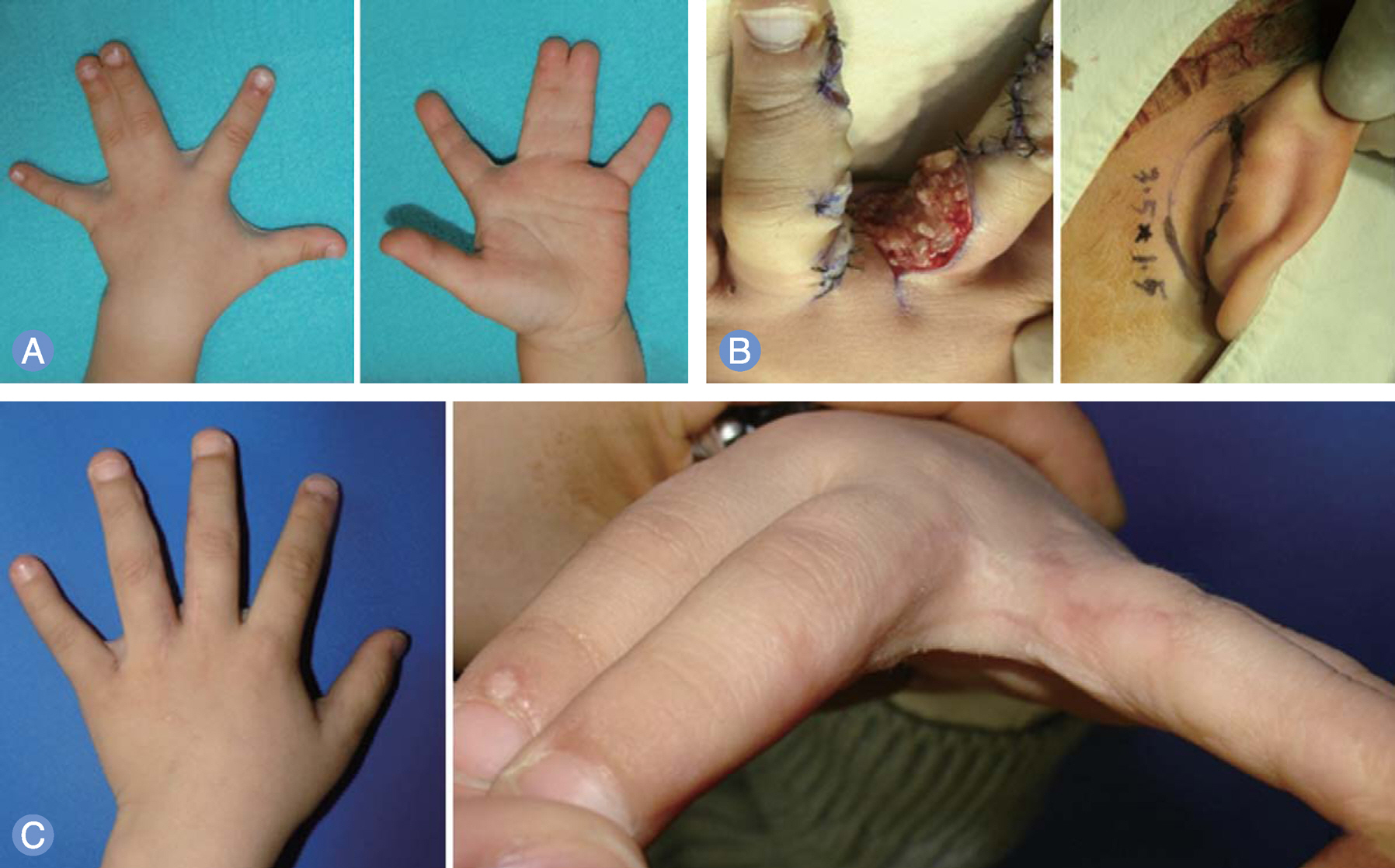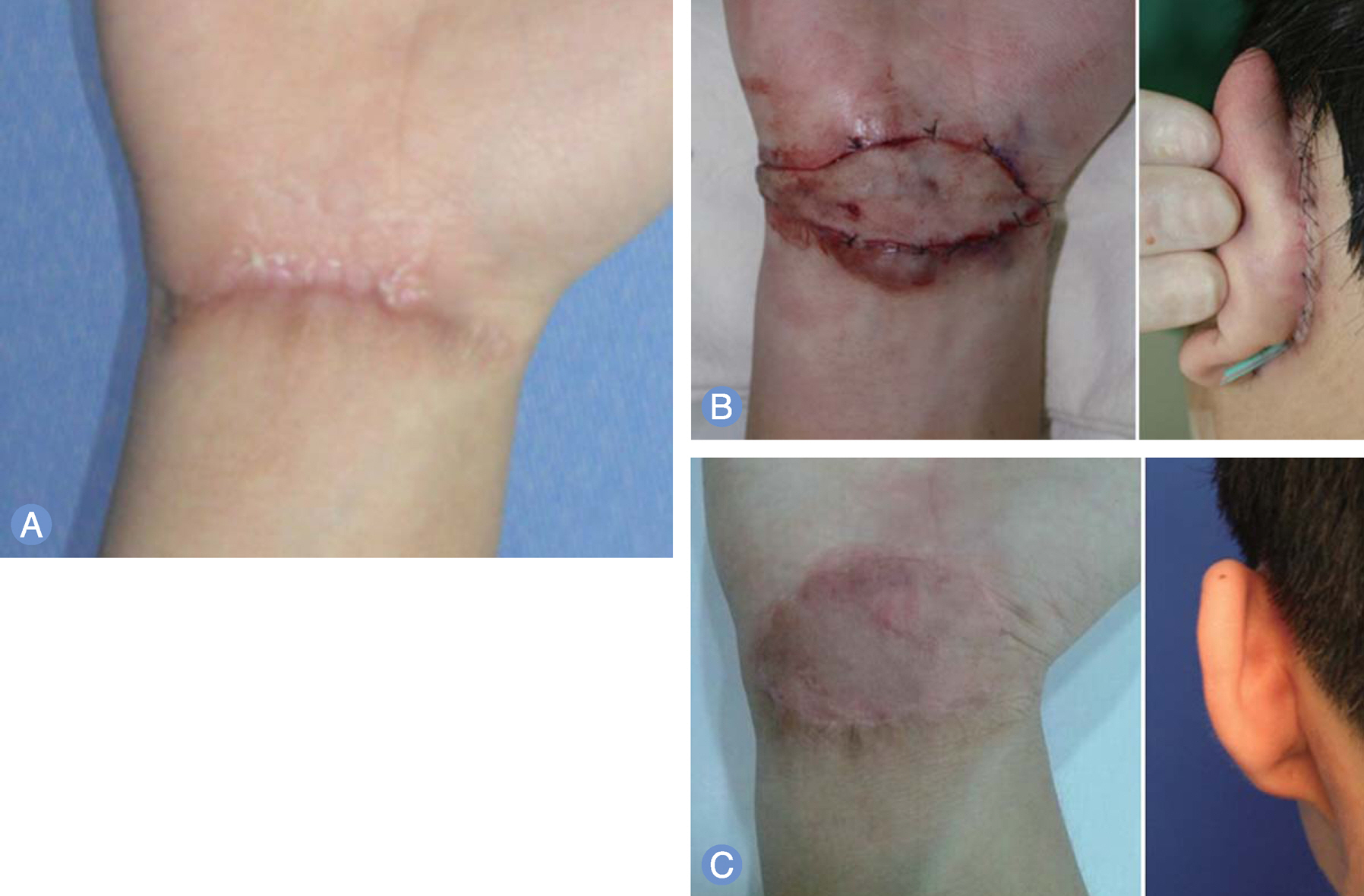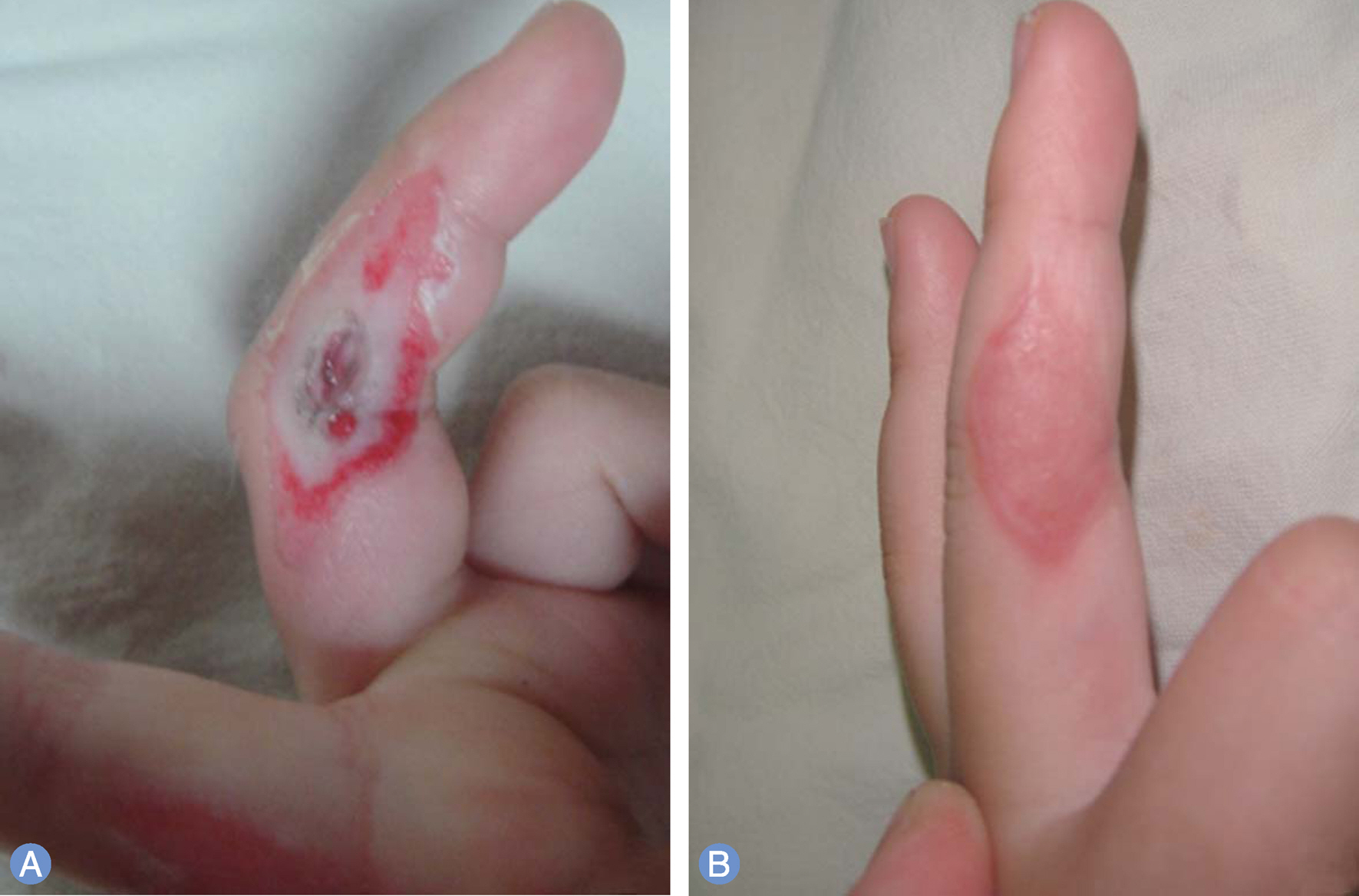J Korean Soc Surg Hand.
2014 Sep;19(3):109-115. 10.12790/jkssh.2014.19.3.109.
The Usefulness of Retroauricular Full Thickness Skin Graft in Hand Reconstruction
- Affiliations
-
- 1Aesthetic, Plastic and Reconstructive Surgery Center, Good Moonhwa Hospital, Busan, Korea. Sangwind@hanmail.net
- KMID: 2194131
- DOI: http://doi.org/10.12790/jkssh.2014.19.3.109
Abstract
- PURPOSE
We used the retroauricular area skin as an alternative full-thickness skin donor site in the hand reconstruction surgery.
METHODS
From January 2006 to March 2013, 55 patients observed more than 1 year, were recruited for the study. In case of requiring the skin graft on hand, we grafted skins were harvested from the retroauricular area on hand. To assess the subjective and objective satisfaction, the patients themselves and three doctors compared the skin graft area's color with adjacent skin and estimated the donor site scar on a five-point scale.
RESULTS
A partial necrosis was seen in one case who received skin graft because of a burn scar contracture, but it was cured with conservative treatment. In other cases, the skin graft was well taken without any specific problems. The retroauricular skin graft showed good color match with adjacent skin and less pigmentation. Donor site scar was not noticeable. As a result, the patient's subjective satisfaction (4.07) and doctor's objective satisfaction (4.18) about skin graft were very good. And the patient's subjective satisfaction (4.93) and doctor's objective satisfaction (4.98) about donor site scar were also very good.
CONCLUSION
We obtained the favorable result and the patients satisfaction by using the retroauricular area as a full thickness skin graft donor site in hand.
Keyword
MeSH Terms
Figure
Reference
-
1. Son DG, Park SC, Kim HJ. Medial side of the foot as a skin graft donor site for correction of burn scar contracture of the hand. J Korean Soc Surg Hand. 2005; 10:136–41.2. Seo JW, Kwon H, Yim YM, Jung SN. Great toe pulp graft for the reconstruction of the postburn flexion contracture in the fingers. J Korean Soc Plast Reconstr Surg. 2007; 34:587–92.3. Kim HH, Woo SH, Seul JH. Reconstruction of soft tissue hand defects using various skin free flaps from the foot. J Korean Soc Surg Hand. 1998; 3:237–48.4. Avery CM, Iqbal M, Orr R, Hayter JP. Repair of radial free flap donor site by full-thickness skin graft from inner arm. Br J Oral Maxillofac Surg. 2005; 43:161–5.
Article5. Kim TB, Moe KS, Eisele DW, Orloff LA, Wang SJ. Full-thickness skin graft from the groin for coverage of the radial forearm free flap donor site. Am J Otolaryngol. 2007; 28:325–9.
Article6. Ratner D. Skin grafting. Semin Cutan Med Surg. 2003; 22:295–305.
Article7. Palkar VM. Full-thickness skin grafting. J Surg Oncol. 2000; 73:31.
Article8. Carlson JA, Grabowski R, Mu XC, Del Rosario A, Malfetano J, Slominski A. Possible mechanisms of hypopigmentation in lichen sclerosus. Am J Dermatopathol. 2002; 24:97–107.
Article9. Velangi SS, Rees JL. Why are scars pale? An immunohis-tochemical study indicating preservation of melanocyte number and function in surgical scars. Acta Derm Venereol. 2001; 81:326–8.10. Millard DR Jr. Plastic peregrinations. Plast Reconstr Surg (1946). 1950; 5:26–53.
Article11. Webster JP. Skin grafts for hairless areas of the hands and feet; a preliminary report. Plast Reconstr Surg (1946). 1955; 15:83–101.12. Menick FJ. Facial reconstruction with local and distant tissue: the interface of aesthetic and reconstructive surgery. Plast Reconstr Surg. 1998; 102:1424–33.
Article13. Christian EP, Jeffrey JP, Peter R. Skin graft. Mathes SJ, Hentz VR, editors. Plastic surgery. Philadelphia: WB Saunders;2006. p. 293–314.14. Hallock GG. The cosmetic split-thickness skin graft donor site. Plast Reconstr Surg. 1999; 104:2286–8.
Article
- Full Text Links
- Actions
-
Cited
- CITED
-
- Close
- Share
- Similar articles
-
- Color Analysis of Forehead Flap and Full Thickness Skin Graft in Facial Reconstruction
- Facial skin graft using preauricular and forehead expansion
- Isografting of full-thickness skin to treat syndactyly in monozygotic twins with Apert syndrome: a case report
- Scar Quality and Hand Function after Moist Exposed Burn Ointment and Skin Graft Treatment in Full Thickness Hand Burn
- Hand Resurfacing with Full Thickness Skin Graft from the Palm Ulnar Border




